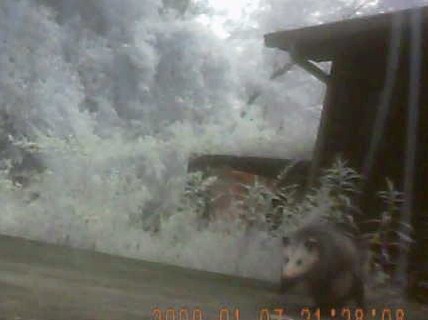Should cats be kept indoors or allowed to roam freely? In the UK, the large majority of the estimated 8 million cats are ‘indoor-outdoor’ cats that spend some proportion of their time exploring outside the house. Often, these cats are free to come and go as they please, undertaking behaviours such as prowling, marking territory and hunting away from home.
However, over recent years, some UK cat owners have considered the decision to keep their cats indoors. The RSPCA notes that there is still uncertainty about whether indoor-only cats are healthier than outdoor cats, but suggests that if cats are kept indoors from an early age and provided with plenty of stimulation and entertainment, they can adapt well to being confined to the home.
One of the main arguments for keeping cats indoors is that outdoor cats encounter a large range of hazards and tend to have reduced lifespans compared to indoor cats. This may affect the health and welfare of the cat and also means that outdoor cats are likely to present to a vet with very different problems (including infectious disease and injury) compared to indoor cats.
Up until now, there has been little scientific research into the lives of outdoor cats, but modern digital technology has created new opportunities, and a recent study by a team from the University of Georgia and National Geographic published in Veterinary Record set out to see first-hand what free-roaming cats in a US town experience.
The researchers sought cat owners to volunteer in the city of Athens, Georgia, USA, and asked them to fit their cats with a video camera designed to give a cats-eye-view without disturbing the cat’s behaviour.
‘While it is commonly stated that roaming cats live shorter lives due to injury, disease, and vehicular accidents, there was very little information available on how often our pets may encounter dangerous situations in the suburban outdoors,’ explains author Kerrie Anne Loyd. ‘The use of animal-borne cameras allowed us to objectively examine and quantify all of the activities pet cats experienced while roaming.’
A cat wearing a KittyCam
Fifty-five cats were included in the study and more than 2000 hours of footage was collected and analysed. The results were compelling.
The video footage revealed that the Athens cats encountered a large number of hazards in their daily lives, including exploring storm drains, having contact with unknown cats and crawling into small spaces in buildings where they could become trapped.
The most common risk encountered was, perhaps unsurprisingly, moving vehicles, with a total of 178 incidents of cats crossing roads recorded.
But some of the hazardous activities were ones that owners may be unlikely to be aware of. For example, one-fifth of the cats consumed liquids and solids away from the home, which the authors state may pose a risk of poisoning. Cats were witnessed drinking from old children’s paddling pools filled with rainwater, puddles in parking lots and the storm drain system. They were also witnessed eating a wide range of things including roadkill, rubbish and compost.
‘Parking lot puddles and runoff from roads and parking lots may be contaminated with anti-freeze or other dangerous chemicals. Food left out for stray cats may become mouldy or infested with ants.’ Notes Loyd, ‘Pet owners can reduce this risk by making sure that roaming cats have access to fresh food and water outside their home. Contact with other roaming cats poses a health risk to pets – feline immunodeficiency virus is just one of the many infectious diseases that may be acquired from contact with other outdoor or stray cats.’
A cat meets a canine neighbour
The authors were also found that four of the 55 cats visited other homes during the period and were petted and fed by other people. In several cases, cats repeatedly returned to other houses and interacted with the people living there.
Although no encounters with larger predators were recorded, one cat did meet and ward off an opossum and the video footage of the event can be viewed here.
Encounter with a possum
Another major risk behaviour was cats visiting places where they could become lost or trapped, with 20 per cent of the cats either spending time in storm drains (posing a risk of drowning in a flood event) or entering the crawl spaces underneath buildings or houses.
When the results were analysed statistically, the authors found that some cats were more likely than others to show risky behaviours. Males were significantly more likely than females to undertake risks (including crossing roads), and cats seemed to become more cautious as they got older, with the number of hazardous incidents decreasing in line with age.
While the results cannot be extrapolated to every outdoor cat, with cats that roam in the inner-city or very rural country probably experiencing different risks, the paper shows that free-roaming pet cats experience a wide variety of hazards.
Kerrie Anne Loyd states, ‘In addition to documented risks, we are aware that many pet cats become lost while roaming, and three of our initial volunteers had to withdraw because their pets became lost or critically injured before we could get the video cameras on their cats.’ She suggests that owners could reduce these risks by considering an indoor life for their cat.
Video footage from the study can be viewed on the KittyCam Project page here.


